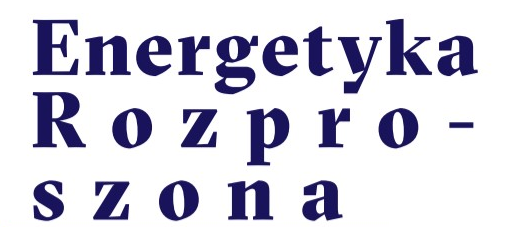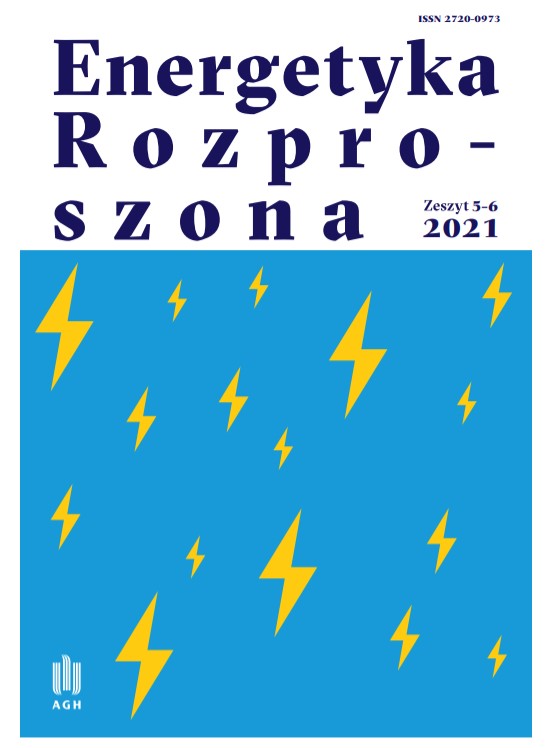Zastosowanie rozwiązań teleinformatycznych w środowisku rozproszonych źródeł energii
DOI:
https://doi.org/10.7494/er.2021.5-6.119Słowa kluczowe:
energetyka rozproszona, systemy teleinformatyczneAbstrakt
Przedmiotem niniejszego artykułu jest opis funkcjonowania rozwiązań teleinformatycznych w energetyce rozproszonej. Tematyka ta była poruszana w literaturze z ostatnich kilku lat (m.in.: Lund et al. 2019; Meisel et al. 2015; Morales Pedraza 2014; Konstantin, Konstantin 2018; Jaegersberg, Ure 2017; U.S. Department of Energy 2019; Brown et al. 2018; Wang et al. 2019; Chen et al. 2020; Zia et al. 2018; Zhang et al. 2018). Celem artykułu jest przedstawienie roli systemów teleinformatycznych w funkcjonowaniu nowoczesnej energetyki, ze szczególnym uwzględnieniem klastrów energetycznych w kształtującym się obecnie otoczeniu biznesowym i regulacyjnym.
Bibliografia
Ali A.B.M. Shawkat (red.) (2013), Smart Grids: Opportunities, Developments, and Trends, Green Energy and Technology, Springer.
Bacher R., Badajoz C., Negri A., de Nigris M. (2020), ETIP SNET R&I Roadmap 2020–2030, “ETIP SNET”, https://www.etipsnet.eu/wp-content/uploads/2020/02/ETIP-SNET-RI-Roadmap-2020-2030_WEB.pdf [dostęp: 29.05.2021].
Botterud, A., Wang J., Miranda V., Bessa R.J., (2010), Wind Power Forecasting in U.S. Electricity Markets, “Electricity Journal” 23 (3): 71–82.
Brown M.A., Zhou S., Ahmadi M. (2018), Smart Grid Governance: An International Review of Evolving Policy Issues and Innovations, “Wiley Interdisciplinary Reviews: Energy and Environment” 7 (5): e290.
Chen M., Ciwei G., Meng S., Songsong Ch., Dezhi L., Qiang L. (2020), Internet Data Centers Participating in Demand Response: A Comprehensive Review, “Renewable and Sustainable Energy Reviews” 117: 109466.
Dollen D. von (2012), Smart Grid Roadmap Guidebook, EPRI, Palo Alto, CA. Edwards R.E., New J., Parker L.E. (2012), Predicting Future Hourly Residential Electrical Consumption: A Machine Learning Case Study, “Energy and Buildings” 49: 591–603.
Faisal M.A., Aung Z., Williams J.R., Sanchez A. (2012), Securing Advanced Metering Infrastructure Using Intrusion Detection System with Data Stream Mining, [w:] Intelligence and Security Informatics, M. Chau, G.A Wang, W.T. Yue, H. Chen (red.), “Lecture Notes in Computer Science”, Springer, Berlin, Heidelberg: 96–111.
Fan Z. (2011), Distributed demand response and user adaptation in smart grids, [w:] 12th IFIP/IEEE International Symposium on Integrated Network Management (IM 2011) and Workshops, IEEE: 726–729.
Fatemieh O., Ranveer Ch., Carl A.G. (2010), Low Cost and Secure Smart Meter Communications Using the TV White Spaces, [w:] Proceedings – ISRCS 2010 – 3rd International Symposium on Resilient Control Systems, IEEE: 37–42.
Fernandes R.A.S, Silva I.N., Oleskovicz M. (2010), Identification of residential load profile in the Smart Grid context, [w:] IEEE PES General Meeting, IEEE, Minneapolis, MN: 1–6.
Fernández I., Borges C.E., Penya Y.K. (2011), Efficient building load forecasting, [w:] ETFA2011, IEEE: 1–8. Geelen D., Reinders A., Keyson D. (2013), Empowering the End-User in Smart Grids: Recommendations for the Design of Products and Services, “Energy Policy” 61: 151–161.
He H., Starzyk J.A. (2006), A self-organizing learning array system for power quality classification based on wavelet transform, “IEEE Transactions on Power Delivery” 21 (1): 286–295.
Jaegersberg G., Ure J. (2017), Renewable Energy Clusters: Recurring Barriers to Cluster Development in Eleven Countries, Innovation Technology and Knowledge Management, Springer.
Kaplan S.M., Sissine F., Abel A., Wellinghoff J., Kelly S.G., Hoecker J.J. (2009), Smart Grid: Modernizing Electric Power Transmission and Distribution; Energy Independence, Storage and Security; Energy Independence and Security Act of 2007 (EISA); Improving Electrical Grid Efficiency, Communication, Reliability, and Resiliency; Integrating New and Renewable Energy Sources, US Federal Government Report, Government Series, Capitol.Net.
King L. (2008), The Common Information Model for Distribution. An Introduction to the CIM for Integrating Distribution Applications and Systems, Technical update 1016058, EPRI Project Manager, https://vdocument.in/epri-introtocimforintegratingappsandsystemspdf.html [dostęp: 29.05.2021].
Konstantin P., Konstantin M. (2018), The Power Supply Industry: Best Practice Manual for Power Generation and Transport, Economics and Trade, Springer.
Li D., Aung Z., Williams J.R., Sanchez A. (2012), Efficient authentication scheme for data aggregation in smart grid with fault tolerance and fault diagnosis, [w:] 2012 IEEE PES Innovative Smart Grid Technologies (ISGT), IEEE, Washington, DC: 1–8.
Lopes J.A. Peças, Hatziargyriou N., Mutale J., Djapic P., Jenkins N. (2007), Integrating Distributed Generation into Electric Power Systems: A Review of Drivers, Challenges and Opportunities, “Electric Power Systems Research” 77 (9): 1189–1203.
Lund P.D., Byrne J., Haas R., Flynn D. (red.) (2019), Advances in Energy Systems: The Large-Scale Renewable Energy Integration Challenge, John Wiley & Sons Ltd.
Martini L., Radaelli L., Brunner H., Caerts Ch., Morch A., Hänninen S., Tornelli C. (2015), Electra IRP Approach to Voltage and Frequency Control for Future Power Systems with High DER Penetration, [w:] 23rd International Conference on Electricity Distribution, Paper 1357, Lyon: 1–5.
Meisel M., Berger A., Langer L., Litzlbauer M., Kienesberger G. (2015), The RASSA Initiative – Defining a Reference Architecture for Secure Smart Grids in Austria, [w:] Energy Informatics, S. Gottwalt, L. König, H. Schmeck, “Lecture Notes in Computer Science”, Springer International Publishing, Cham: 51–58.
Morales Pedraza J. (2014), Electrical Energy Generation in Europe: The Current and Future Role of Conventional Energy Sources in the Regional Generation of Electricity, Springer.
Quinn E. (2009), Smart Metering and Privacy: Existing Laws and Competing Policies, “SSRN Electronic Journal”. Ramchurn S.D., Vytelingum P., Rogers A., Jennings N.R. (2012), Putting the “smarts” into the Smart Grid: A Grand Challenge for Artificial Intelligence, “Communications of the ACM” 55 (4): 86–97.
Sweeney C., Bessa R. J., Browell J., Pinson P. (2020), The future of forecasting for renewable energy, WIREs Energy and Environment 9 (2): e365. Tsikalakis A.G., Hatziargyriou N.D. (2011), Centralized Control for Optimizing Microgrids Operation, [w:] 2011 IEEE Power and Energy Society General Meeting, IEEE, Detroit, MI: 1–8. U.S.
Department of Energy (2019), International Energy Outlook 2019, https://www.eia.gov/outlooks/ieo/pdf/ieo2019.pdf [dostęp: 29.05.2021].
Wang Y., Chen Q., Hong T., Kang Ch. (2019), Review of Smart Meter Data Analytics: Applications, Methodologies, and Challenges, “IEEE Transactions on Smart Grid” 10 (3): 3125–3148.
Zhang Y., Huang T., Bompard E.F. (2018), Big Data Analytics in Smart Grids: A Review, “Energy Informatics” 1 (1): 8.
Zia M.F., Elbouchikhi E., Benbouzid M. (2018), Microgrids Energy Management Systems: A Critical Review on Methods, Solutions, and Prospects, “Applied Energy” 222: 1033–1055.
Pobrania
Opublikowane
Numer
Dział
Licencja
Prawa autorskie (c) 2022 Czasopismo „Energetyka Rozproszona” stosuje licencję „Creative Commons Uznanie autorstwa 4.0”, która pozwala na kopiowanie, zmienianie, rozprowadzanie, przedstawianie i wykonywanie utworu jedynie pod warunkiem oznaczenia autorstwa. Z pełną treścią licencji można zapoznać się na stronie: https://creativecommons.org/licenses/by/4.0/legalcode.

Utwór dostępny jest na licencji Creative Commons Uznanie autorstwa 4.0 Międzynarodowe.


